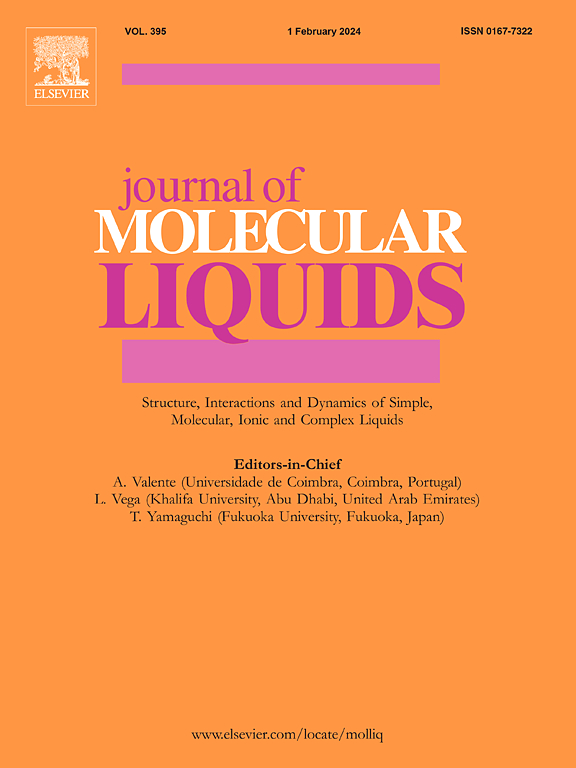A novel pH probe based on tetrahydropyridine synthesis and its application in bioimaging
IF 5.3
2区 化学
Q2 CHEMISTRY, PHYSICAL
引用次数: 0
Abstract
Half-cyanine dye is a highly tunable red fluorescent structure, with fluorescence emission in the near-infrared region (650 nm–900 nm). This study utilized nitrogen substituted –CH2 to design and synthesize a cyanine structure with a tetrahydropyridine ring. Based on the characteristics of this structure, a novel fluorescent probe He-Cy was designed and synthesized, capable of detecting pH levels effectively. Through an in-depth analysis of the structural and optical properties of the He-Cy probe, it was found that the difference in UV absorption in different pH environments mainly originated from the internal charge transfer (ICT) effect induced by the protonation and deprotonation of hydroxyl groups. The fluorescence intensity of this probe increases with pH showing excellent photostability and biocompatibility. As demonstrated in cell and zebrafish models, the He-Cy probe was able to respond to a variety of exogenous pH changes. Specifically, pH 7.12 brought about a significant increase in luminescence brightness, whereas acidic pH brought about a decrease in luminescence brightness. This property suggests that the He-Cy probe can effectively monitor pH changes in biological microenvironments. There is a broad scope of applications for the He-Cy probe, which is expected to contribute significantly to biomedical research and clinical diagnosis.
求助全文
约1分钟内获得全文
求助全文
来源期刊

Journal of Molecular Liquids
化学-物理:原子、分子和化学物理
CiteScore
10.30
自引率
16.70%
发文量
2597
审稿时长
78 days
期刊介绍:
The journal includes papers in the following areas:
– Simple organic liquids and mixtures
– Ionic liquids
– Surfactant solutions (including micelles and vesicles) and liquid interfaces
– Colloidal solutions and nanoparticles
– Thermotropic and lyotropic liquid crystals
– Ferrofluids
– Water, aqueous solutions and other hydrogen-bonded liquids
– Lubricants, polymer solutions and melts
– Molten metals and salts
– Phase transitions and critical phenomena in liquids and confined fluids
– Self assembly in complex liquids.– Biomolecules in solution
The emphasis is on the molecular (or microscopic) understanding of particular liquids or liquid systems, especially concerning structure, dynamics and intermolecular forces. The experimental techniques used may include:
– Conventional spectroscopy (mid-IR and far-IR, Raman, NMR, etc.)
– Non-linear optics and time resolved spectroscopy (psec, fsec, asec, ISRS, etc.)
– Light scattering (Rayleigh, Brillouin, PCS, etc.)
– Dielectric relaxation
– X-ray and neutron scattering and diffraction.
Experimental studies, computer simulations (MD or MC) and analytical theory will be considered for publication; papers just reporting experimental results that do not contribute to the understanding of the fundamentals of molecular and ionic liquids will not be accepted. Only papers of a non-routine nature and advancing the field will be considered for publication.
 求助内容:
求助内容: 应助结果提醒方式:
应助结果提醒方式:


